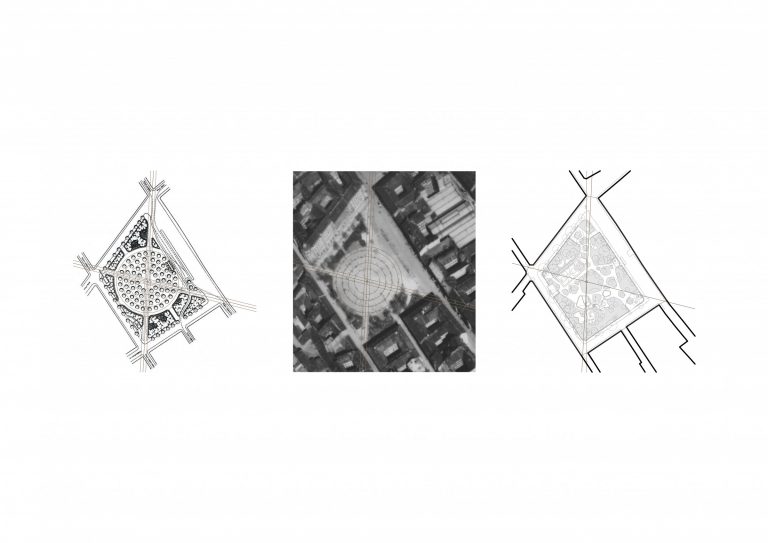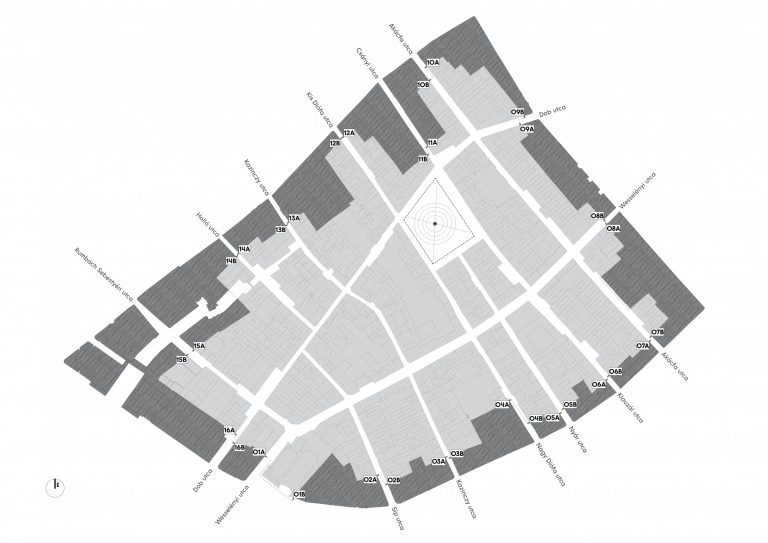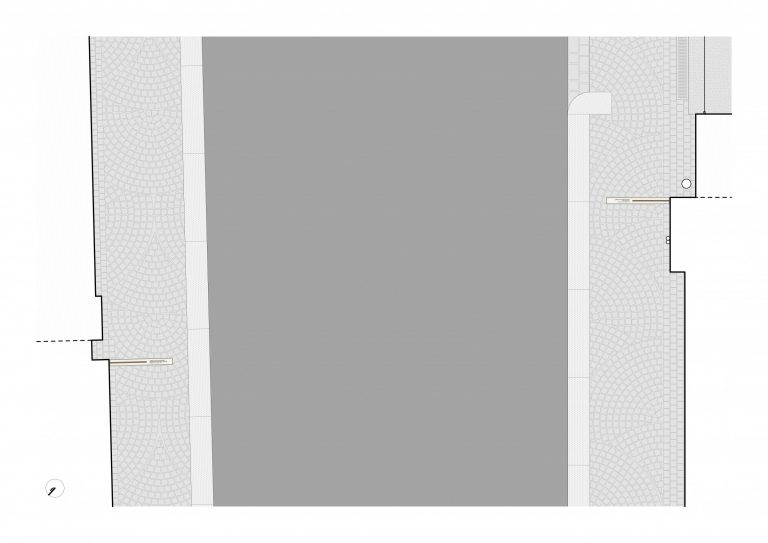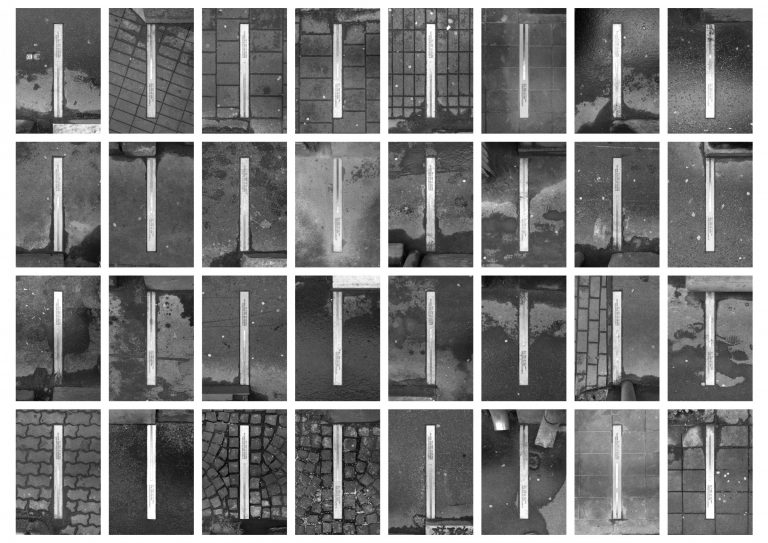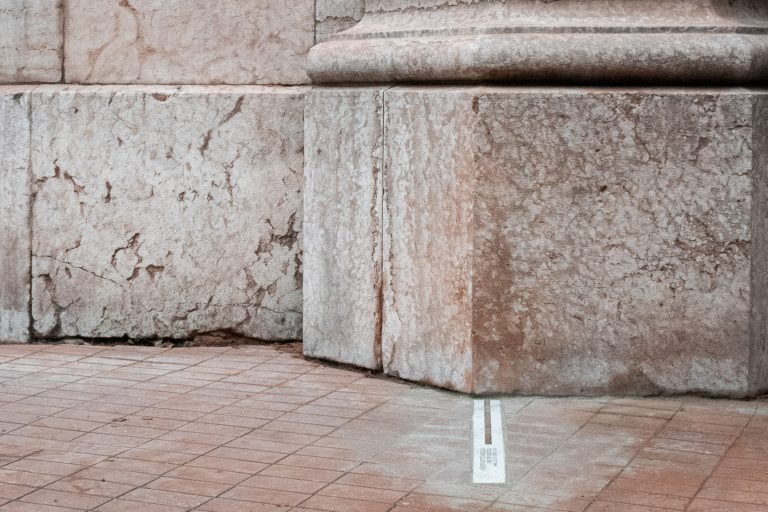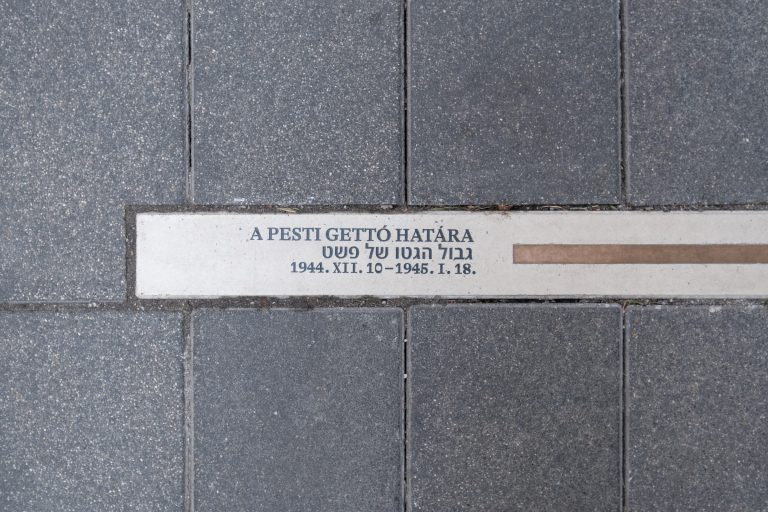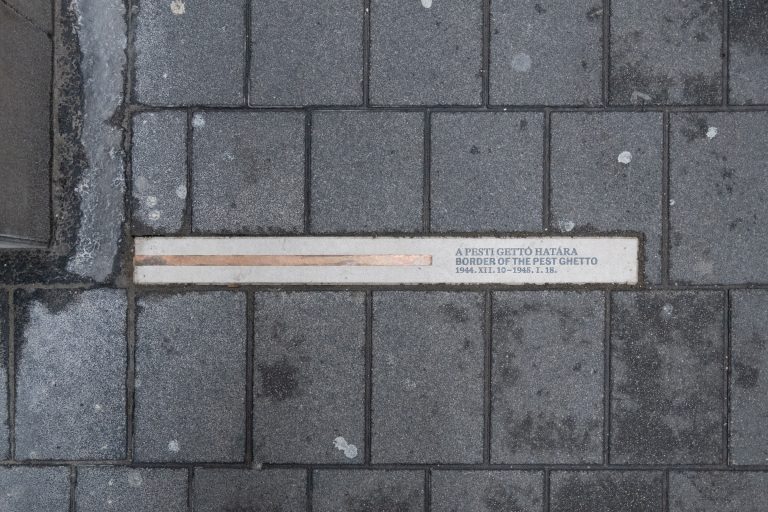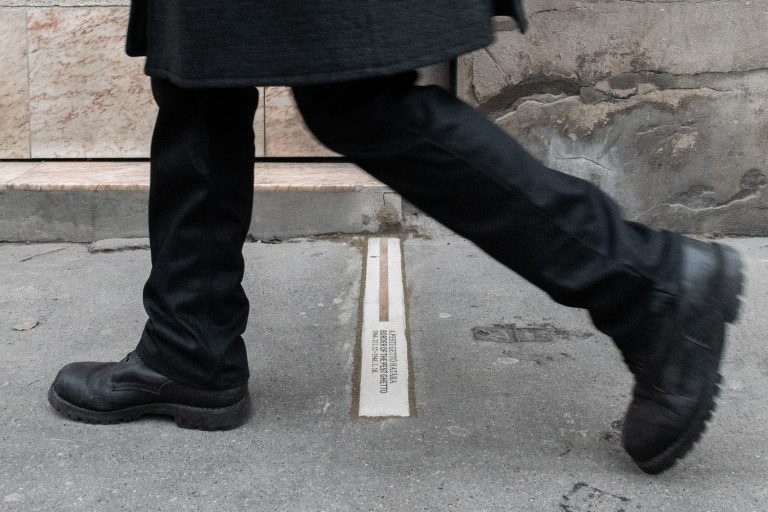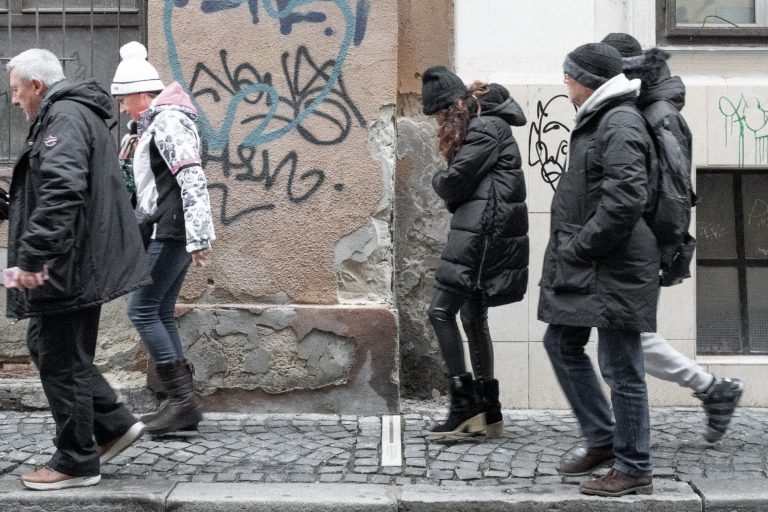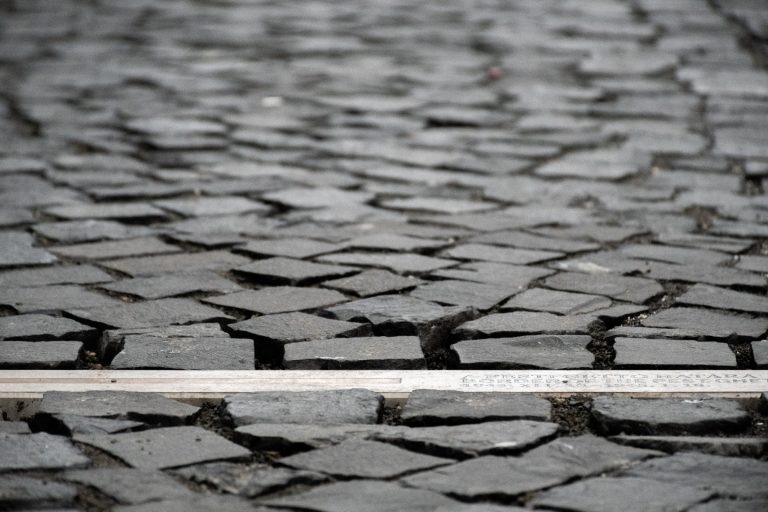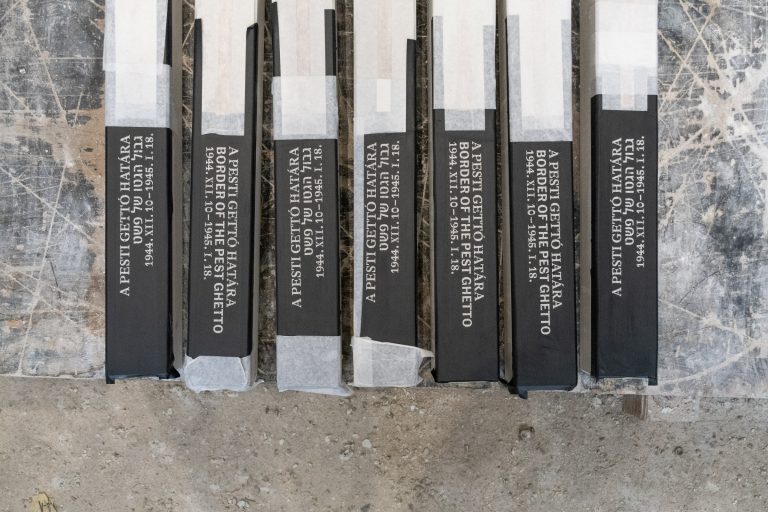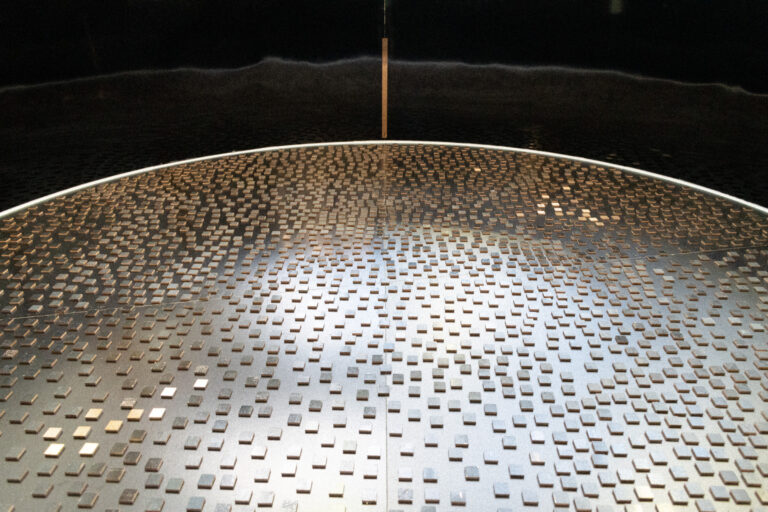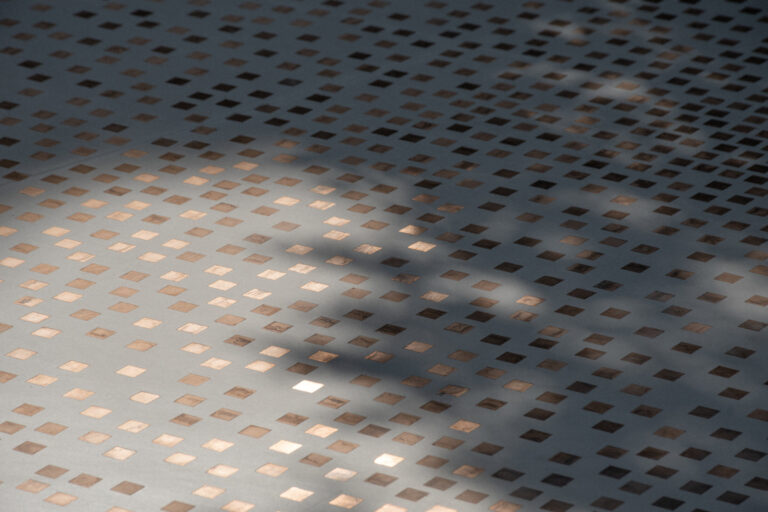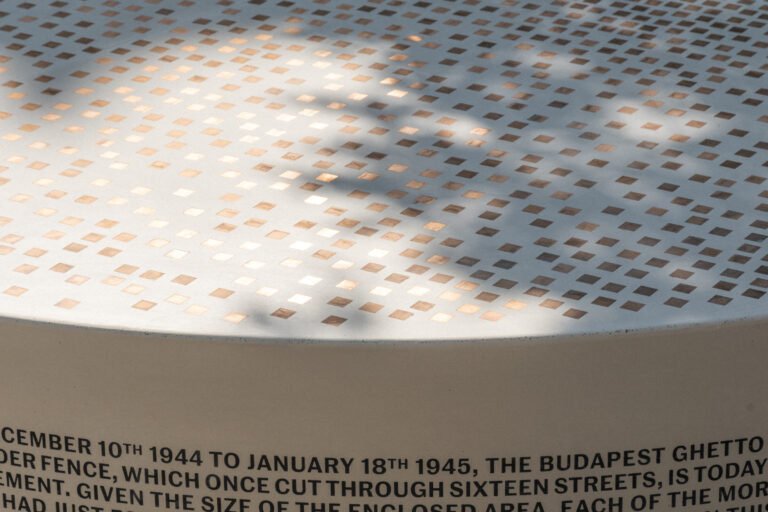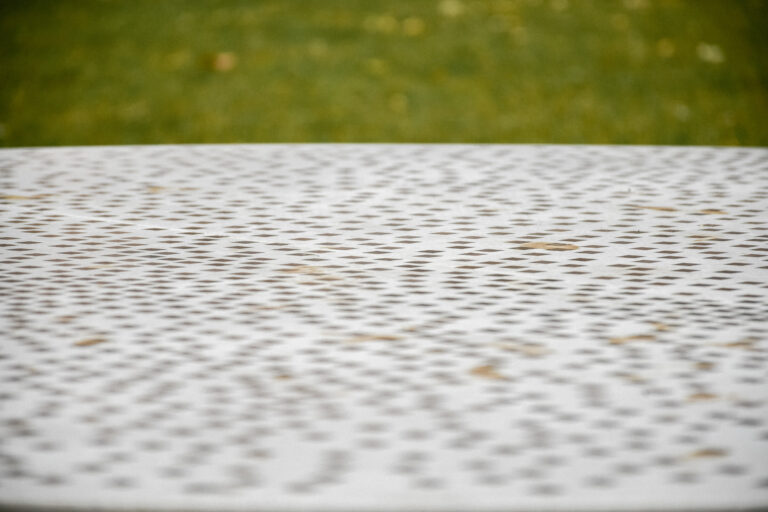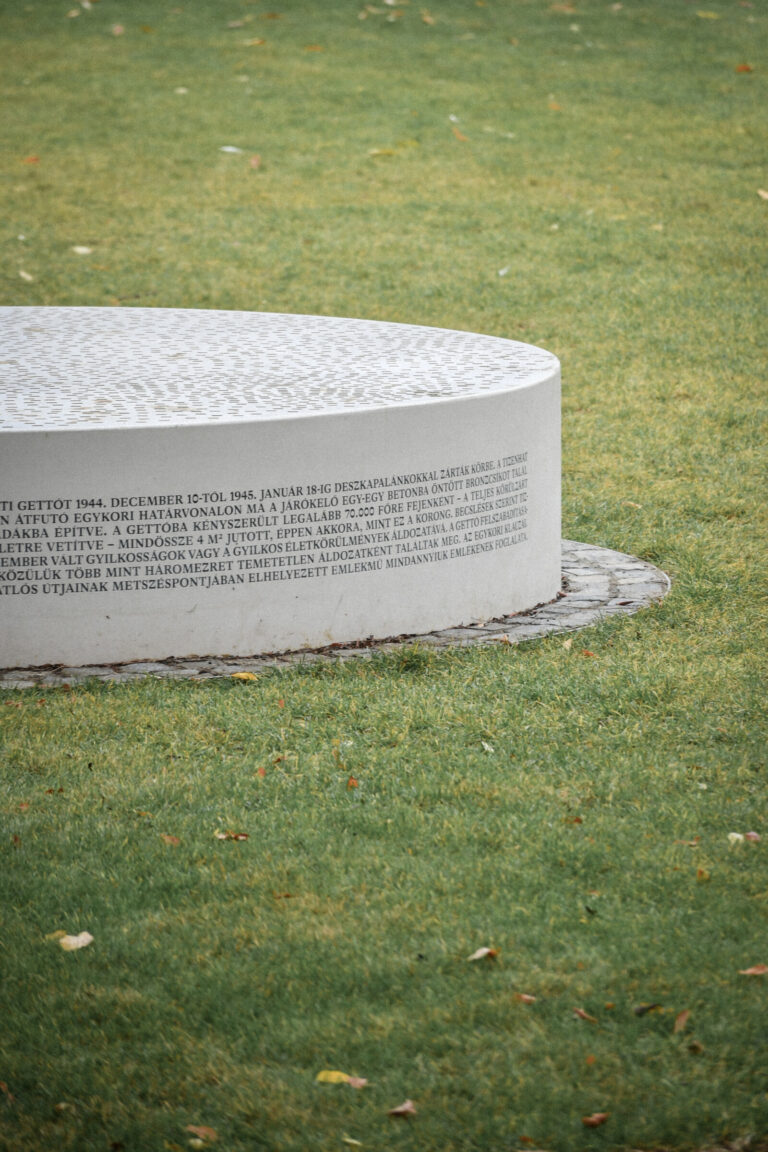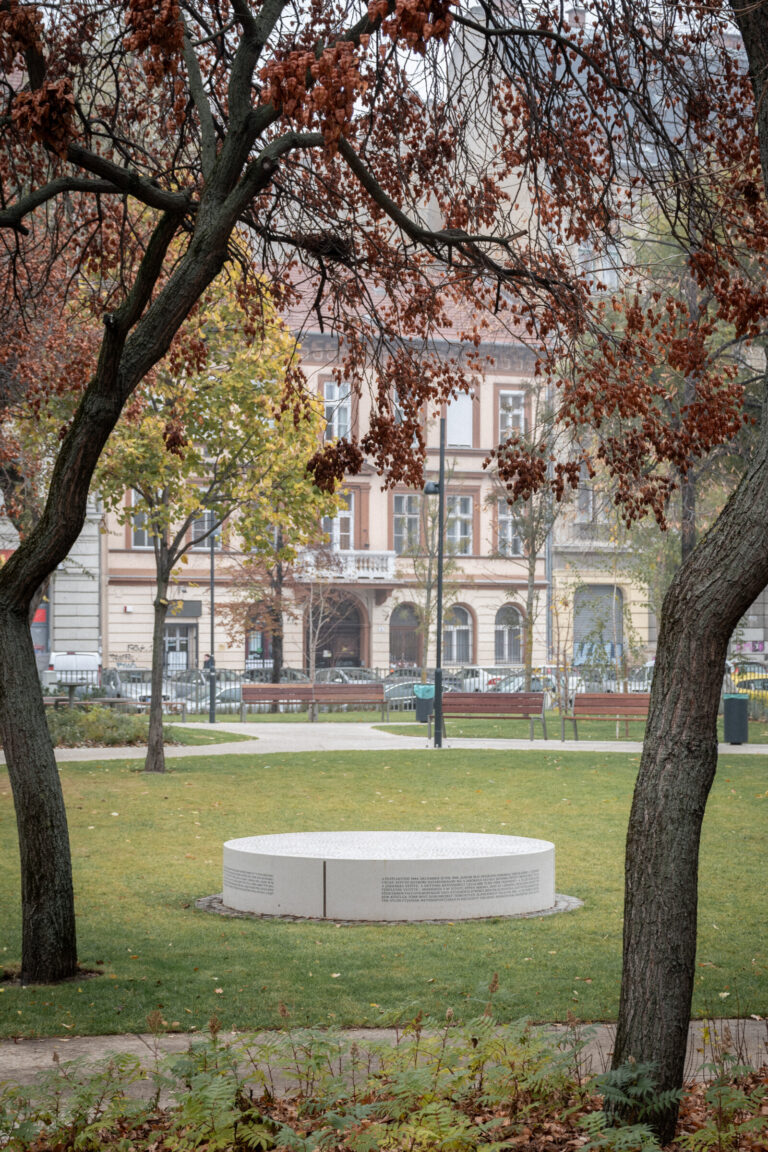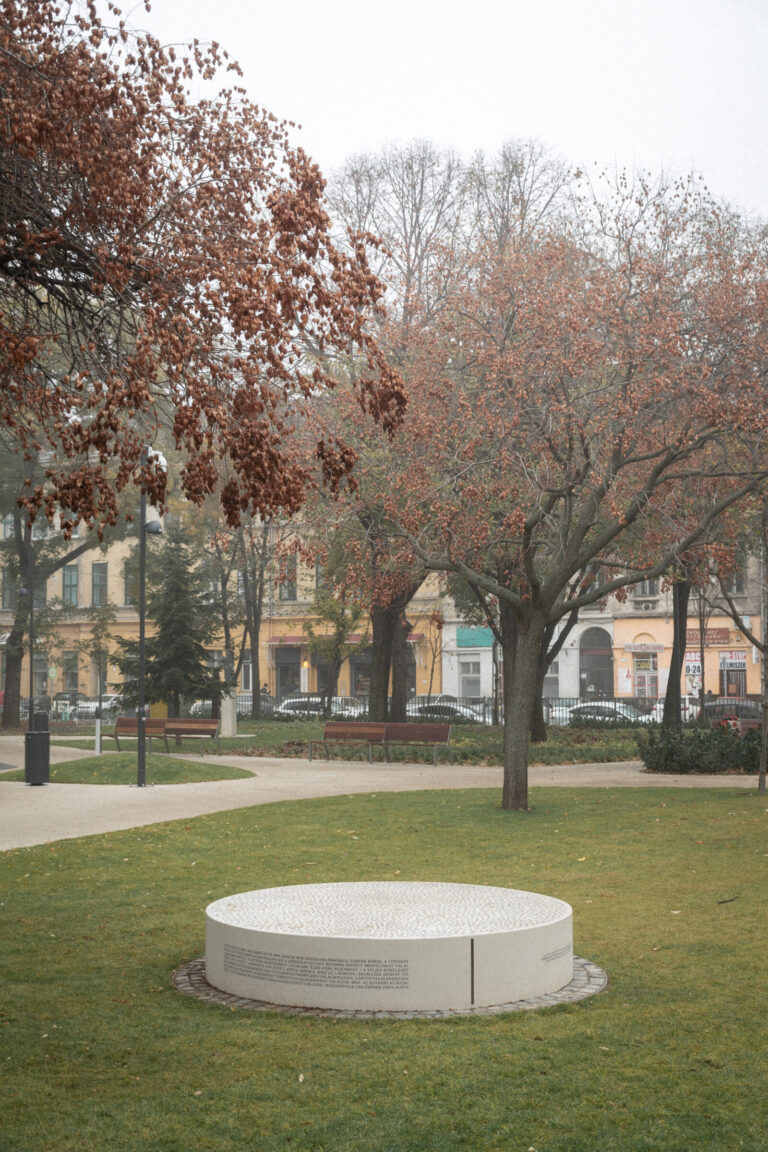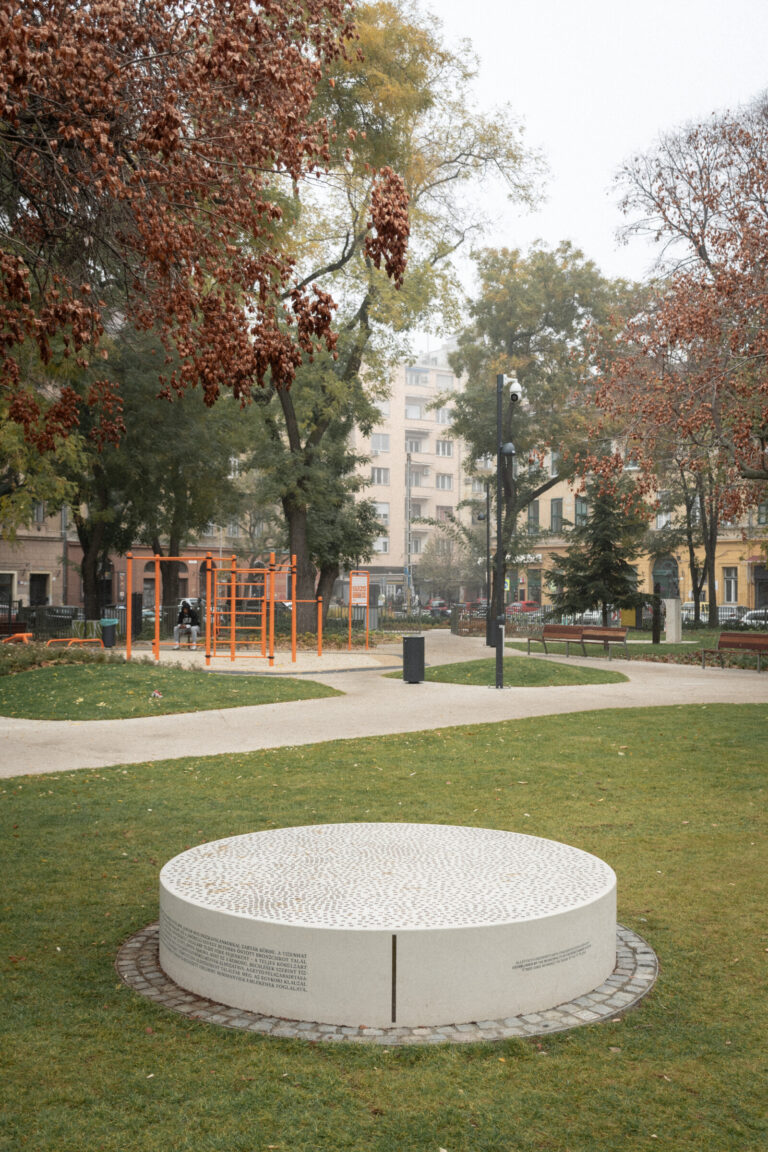Ghetto memorial

2024
Ghetto memorial, Budapest VII.
Client: Budapest VII. district local government
Design: Hetedik Műterem Ltd.
Authors of the 2023-2024 project: Levente Szabó, Balázs Biri, László Rátgéber
Authors of the 2021 competition: Levente Szabó, Balázs Biri, Anna Breuer, Borbála Surján, Szabolcs Szilágyi
Graphic design and typography: Ákos Polgárdi
Concrete elements: VPI Concrete
Construction: Kőművészet Ltd.
Photo: Balázs Biri
According to the decree issued on 29 November 1944, the Pest ghetto was closed on 10 December 1944. Its boundaries were mostly made up of interconnected firewalls, in a few places they appeared as a wall separating the inner courtyard from the existing fences, and on the streets as wooden palisades. More than 70 000 people lived crammed together in the enclosed 0.3 sqkm area enclosed. At the time of liberation, on 18 January 1945, some 3,000 unburied bodies were found lying in the streets and on Klauzal Square. After the liberation, the victims were temporarily buried in the green areas of the ghetto, some of them in three small mass graves on Klauzál Square. The bodies were later exhumed and transported to the cemetery on Salgótarjáni út. 2881 bodies (1140 victims known by name) were placed in 24 common graves in the courtyard of the Dohány Street Synagogue, which is now the only mass grave in the ghetto that bears witness to the Holocaust.
The memorial has and will have two closely related elements and sites. The first is the demarcation of the former ghetto itself in public spaces, the evocation of a boundary line that until now barely existed for the collective consciousness. The other is the memorial site in the largest square in the centre of the former ghetto, near the former mass graves.
The only once real and therefore markable physical reality is the boundary of the ghetto, the ‘evocation’ of which, we intend, helps to make conceivable – precisely by offering the reality of spatiality alongside the abstraction of historical knowledge – the tragedy that occurred, which was both personal, affecting former families, and at the same time connected to all of us, Hungarians, today. A network of barely perceptible signs at the entry and exit points of the area has been created. The former border crossed a total of 16 streets. In the place of the former palisades that ran through the 16 streets, 16-16 boundary markers, 32 in total, were placed. The boundary markers, which are 85 cm long and 8 cm wide, are constructed of coloured artificial stone. Sunk into their surface, they are marked by an 18 mm wide, 50 cm long, 4 mm thick bronze bar, which is complemented by a painted, acid-etched text. Two types of boundary markers were made and placed on the pavement of each street. One in Hungarian-English, the other in Hungarian-Hebrew, with the unified text “Border of the Pest ghetto / 1944. XII. 10-1945. I. 18.”
The placement of the central, pointlike element is based on the layout of 1944, with a concentric square of trees around a strong centre. The central element will be placed in the centre of the former square, which will be part of the green area of the planned landscaping that will be implemented independently of the memorial. This position is thus also an attempt to interpret the space in time, referring to the real spatial environment of the traumatic past, representing its former centre as a faint memory trace. The central element is an artificial stone disc with a diameter of 226 cm, and height of 40 cm, with a surface area of exactly 4 sqm. 3,000 4 mm thick 18×18 mm bronze plates are distributed in a unique, irregular pattern on the upper surface of the disc. The 4 sqm expresses and gives a sense of the average area per person in an incomprehensibly overcrowded ghetto of 0.3 sqkm . And the 3000 bronze slabs will give an indication of the number of unburied victims found at the time of liberation. The surface of the Klauzál Square memorial marker will appear as a relief, an abstract surface in the focus of the former space, and the density of the markers will also refer to the spatial arrangement of the ghetto map and the former mass graves.

